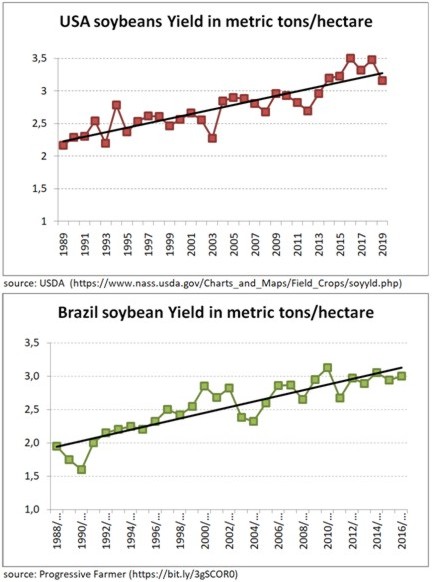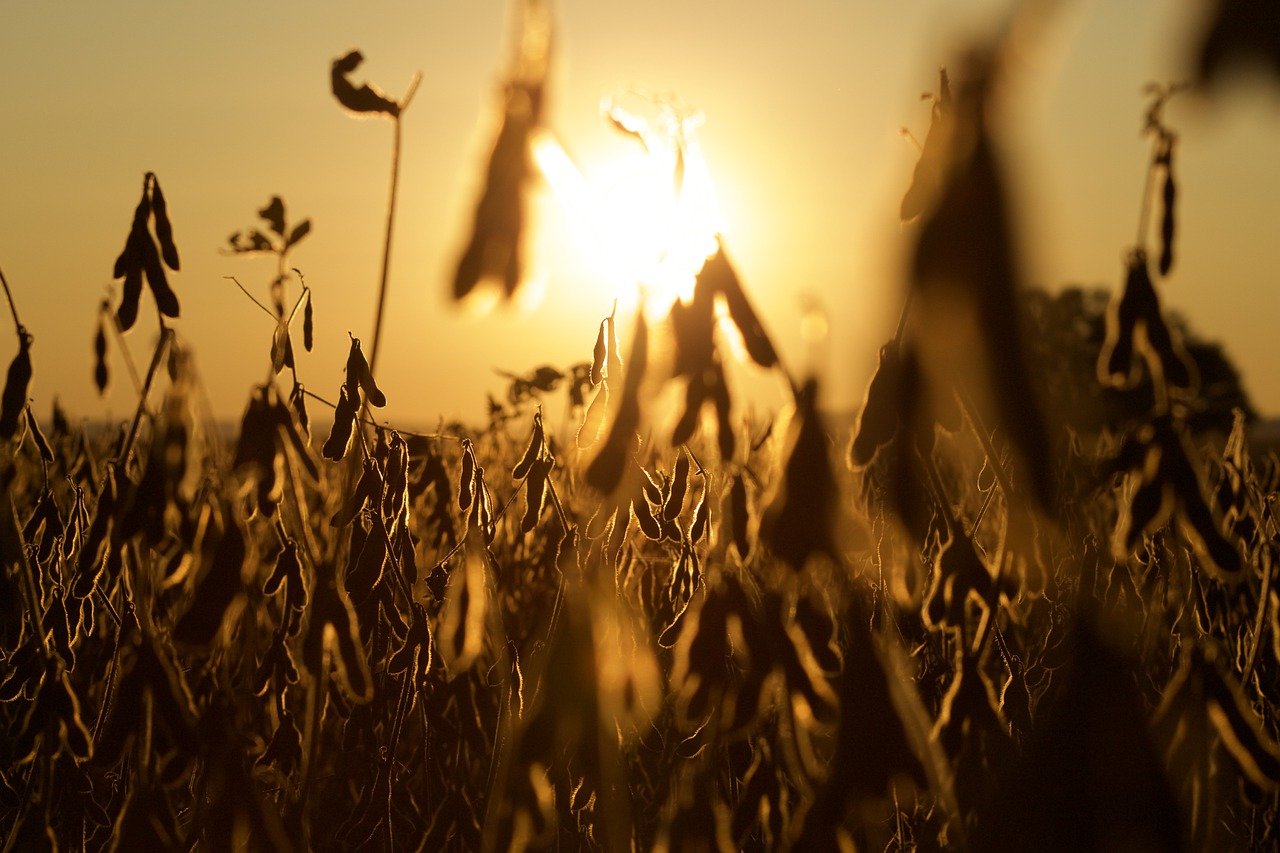Some relevant facts
- Soybean oil production surpassed 60,000 kt*, (significantly greater than the global plasticizers market - including all petroleum-based materials - of 8,000 kt/yr)
- 4,3% of the Brazilian territory is occupied with soybean crops
- Soy productivity rose 106% from 1990 to 2016 in Brazil and 59% in the US, still with potential improvements, reducing land use needed for growth
- Brazil, 120 million tonnes and US, 100 million tonnes, are the largest producers of soy (2020 season)
* statista.com

Soy Sustainability
Soybean production has increased significantly in the past years, especially in Brazil, increasing even more the relevance of the sustainability of these operations to the global environment. The main concerns revolve around the use of land, deforestation, use of agrochemicals, genetic modified organisms, and social impacts.
In response to these concerns, a series of actions, sponsored by governments and producer associations, have been developed to ensure the sustainability of soy through regulations and enforcement programs.
It is important to note that the productivity of soy has increased significantly in the past years, resulting in more production with the same land occupation in both Brazil and the USA.
It is also important to observe that soybean oil, our main raw material, composes an average 19% of the total mass of the soy bean grain.
As soy meal is fundamentally used for animal feed, the oil portion of the soy that is used in non-food applications has a reduced impact on food security and pricing, as the demand for soy oil can only be met with additional supply of soy meal. Aso, soy oil for food is readily replaceable with other vegetable oils such as canola, corn, and sunflower.
 USA
USA
The total production of soy in the USA is around 100 million tons per year. The USA producers, through regional and national associations, have implemented various programs to ensure the sustainability of their operations. As an example, the
Soy Connection of the United Soybean Board promotes sustainable practices, that not only are good for the environment, but actually improve yields and profitability for the farmer. These practices include: improve nutrient efficiency of soil, use less pesticides, boost crop productivity, conserve water, and enrich soil quality.
Also, the majority of U.S. soybean farmers (more than 300,000) follow the conservation regulations and farming practices outlined in the
U.S. Soybean Sustainability Protocol, or SSAP. The guidelines included in the SSAP set required steps for U.S. soybean farmers to continuously improve their sustainability performance and includes farm audits conducted by an independent third party – the U.S. Department of Agriculture. It’s also benchmarked against the soy sourcing guidelines of the European Feed Association, (FEFAC), and by the independent International Trade Centre (ITC).
Between now and the year 2025, U.S. soybean farmers aim to reduce land impact (measured in tons per hectare) by 10 percent; reduce soil erosion (measured per ton) by an additional 25 percent; increase energy use efficiency by 10 percent of BTUs used per ton; and reduce total greenhouse gas emissions by 10 percent
BRAZIL
Brazil has, in 2020, became the largest producer and exporter of soy in the world. At the same time, fires and deforestation caused a significant global concern with the country's ability to enforce its strict environmental laws and regulations. But, in spite of government failures, most Brazilian farmers are voluntarily engaged in sustainable soy programs.
For soybean oil, Innoleics's main raw material, most producers are multinational companies, with headquarters in the USA, France, China, and others. All these multinational companies, such as LDC, ADM, Cofco, Cargill, and Bunge, are signatories of the "Moratória da Soja" (or
"Soy Moratorium"). This program is an initiative led by ABIOVE (Brazilian Vegetable Oils Industry Association) and ANEC (National Grains Exporters Association), to comply with the international market demand for sustainable soy. This program has engaged approximately 90% of the soy market in Brazil.
The monitoring of deforestation is made by satellite images and allows members of the program to ensure that they are purchasing grains from farmers that comply with the Moratorium regulations. Soy farmers that aren't in compliance won't be able to sell to the company members of the Moratorium, what in practice takes them out of the Brazilian market.



